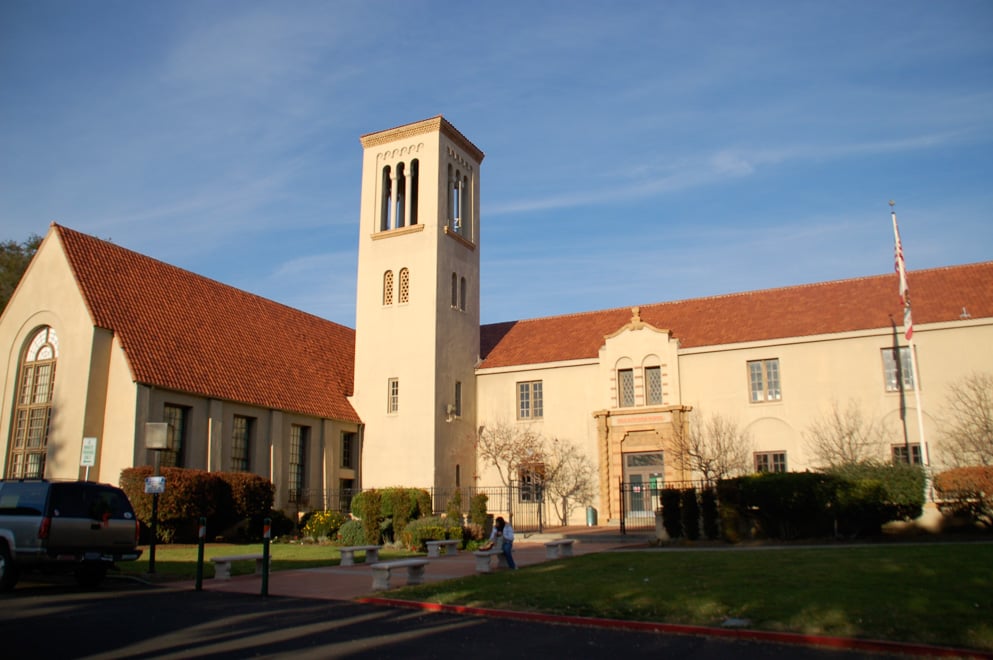The Palo Alto Unified School District (PAUSD) Board of Education will meet with a district attorney to discuss options for legal action regarding the impact of Stanford University’s proposed expansion plan on Tuesday. The meeting follows growing community concern that the anticipated population growth accompanying the expansion will generate too many new students in the school district, straining its budget and threatening to decrease quality of education.
Pending approval of Stanford’s 2018 General Use Permit (GUP) application by Santa Clara County, the University will construct 2.275 million square feet of academic and residential space by 2035. The growth is expected to bring in 6,326 people, which would be a 1.2 percent increase in population growth. However, given that Stanford rental properties are tax-exempt, opponents to the plan argue that it would not bring any new property tax revenue to PAUSD to compensate for added student enrollment. As a community-funded school district, PAUSD relies heavily on such revenue.
The board will discuss legal options in the context of the Santa Clara County’s final environmental impact report, released December. The document, compiled by the County, assesses the potential effects of the expansion laid out in the GUP.
The report states that the existing district schools could accommodate new students, writing that the district has “multiple options to explore before building a new school, including reactivating existing school sites such as Cubberley, Greendell, and Garland, and utilizing properties currently leased to private school providers.”
The school board, however, disagrees, reasoning that the problem lies not with capacity constraints, but rather with offering neighborhood schools to serve children who live nearby.
According to Collins, population growth since 2000 has been concentrated along Sand Hill Road, where there is no elementary school. He predicts that there will be between 150 and 200 more students living in this area post-expansion, increasing the number of students with long commute times to school.
“Those students travel further to school — over two miles — than any other students in Palo Alto,” Collins wrote in an email to The Daily. “But to build them a school we need land (about four to six acres), and the only landowner is Stanford. We have capacity elsewhere, but the issue here is proximity, not capacity.”
On Nov. 15, 2018, the school board unanimously approved a resolution asking the Santa Clara County Board of Supervisors to require Stanford to pay annual payments to the district and to make a direct contribution beyond mandated developer fees to mitigate the cost of building a new school. The call for Stanford to set aside land on or near the Sand Hill/Quarry Road corridor for a new elementary school is also part of the November resolution.
Since November, school board district leadership has met with Stanford representatives to attempt to negotiate, but, according to Superintendent Don Austin, the university was unwilling to pursue mitigation options.
“Stanford’s reluctance to have any meaningful dialogue with us and in fact to be at this point in time without acknowledging that there’s an impact to the school district in any way and subsequently offering no thoughts about mitigating efforts — we’re going to look at absolutely every aspect of the GUP and anything that might be a path for us to take to re-engage Stanford in the process,” Austin said in an interview to the Palo Alto Weekly.
Todd Collins, a member of the Palo Alto school board, echoes these sentiments.
“We have all been surprised by the positions Stanford has taken, and feel there is a lot at stake,” he wrote in an email to The Daily. “So exploring legal action makes sense to make sure we do our job protecting the rights and interests of Palo Alto students and our whole community — including all those who live at Stanford,” he wrote in an email to The Daily.
However, Jean McCown, Stanford’s associate vice president for government and community relations, who was present at the fall meetings, told The Daily she intended to continue working with the school board about the GUP “in order to understand concerns about potential future conditions and to consider how they might be addressed.”
“Preliminary discussions with [the board], prior to the start of the development agreement process, began to explore possible approaches to addressing new students generated by additional on-campus faculty and staff housing, and we expect that engagement will continue,” she wrote in an email to The Daily.
McCown has suggested that property taxes from Stanford’s non-exempt commercial holdings, such as the Stanford Research Park and the Stanford Shopping Center, make up for the shortfall in revenue from new rental housing.
The Palo Alto School District has been escalating its lobbying efforts related to Stanford’s growth in recent weeks, creating a 24-page briefing book and new website to elucidate its concerns. Austin sent the briefing document to the Board of Supervisors earlier this month, writing that Stanford is “unilaterally deciding to negatively impact per-pupil funding in a single school district without regard to the fallout for all Palo Alto staff and students.”
The Board of Supervisors has recently started negotiations with Stanford on a development agreement, which allows both parties to have open-ended negotiations about how much growth the county should allow and how much Stanford has to contribute to cover the growth impacts that fall outside the purview of the environmental-review process.
The county has been notified about the school board’s closed-session discussion of possible legal action, Austin told the Palo Alto Weekly.
The board will meet in closed session from 5:00 p.m. to 6:30 p.m. at the district office, 25 Churchill Ave., Room A. Anyone wishing to address the board on closed session items may do so at 5 p.m.
Contact Berber Jin at fjin16 ‘at’ stanford.edu.
